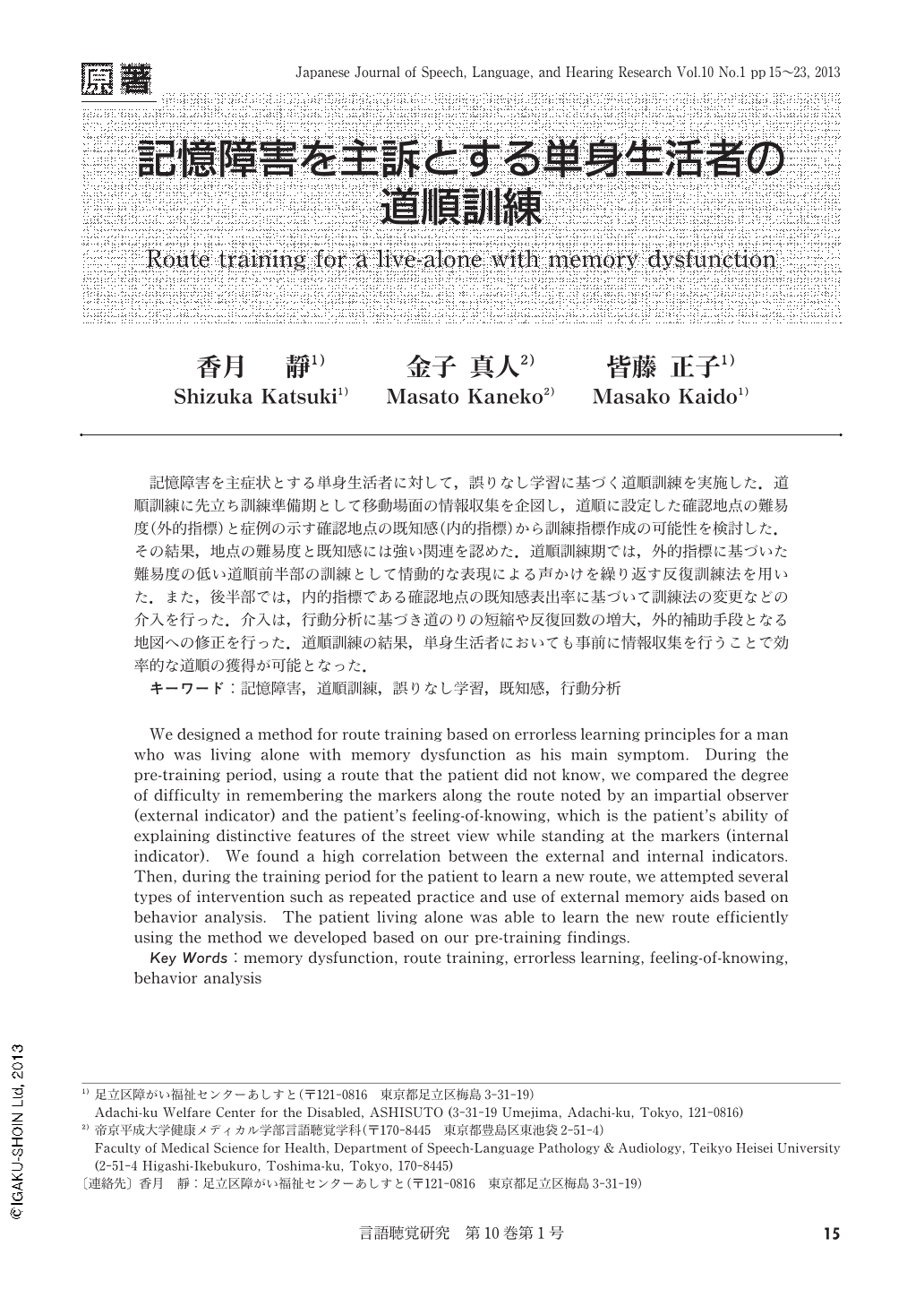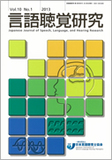Japanese
English
- 有料閲覧
- Abstract 文献概要
- 1ページ目 Look Inside
- 参考文献 Reference
記憶障害を主症状とする単身生活者に対して,誤りなし学習に基づく道順訓練を実施した.道順訓練に先立ち訓練準備期として移動場面の情報収集を企図し,道順に設定した確認地点の難易度(外的指標)と症例の示す確認地点の既知感(内的指標)から訓練指標作成の可能性を検討した.その結果,地点の難易度と既知感には強い関連を認めた.道順訓練期では,外的指標に基づいた難易度の低い道順前半部の訓練として情動的な表現による声かけを繰り返す反復訓練法を用いた.また,後半部では,内的指標である確認地点の既知感表出率に基づいて訓練法の変更などの介入を行った.介入は,行動分析に基づき道のりの短縮や反復回数の増大,外的補助手段となる地図への修正を行った.道順訓練の結果,単身生活者においても事前に情報収集を行うことで効率的な道順の獲得が可能となった.
We designed a method for route training based on errorless learning principles for a man who was living alone with memory dysfunction as his main symptom. During the pre-training period, using a route that the patient did not know, we compared the degree of difficulty in remembering the markers along the route noted by an impartial observer (external indicator) and the patient's feeling-of-knowing, which is the patient's ability of explaining distinctive features of the street view while standing at the markers (internal indicator). We found a high correlation between the external and internal indicators. Then, during the training period for the patient to learn a new route, we attempted several types of intervention such as repeated practice and use of external memory aids based on behavior analysis. The patient living alone was able to learn the new route efficiently using the method we developed based on our pre-training findings.

Copyright © 2013, Japanese Association of Speech-Language-Hearing Therapists. All rights reserved.


